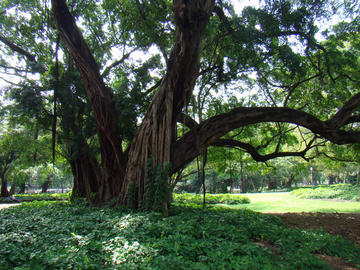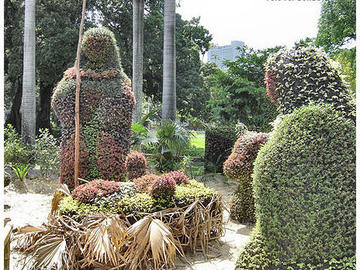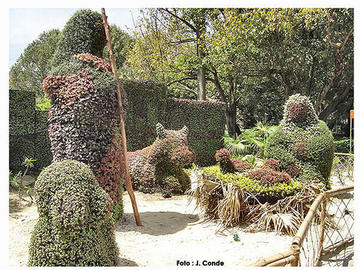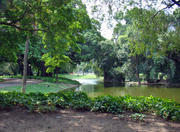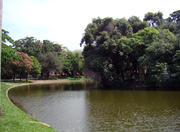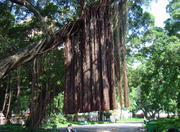Picture
More information on Campo de Santana in Rio de Janeiro

Description: Campo de Santana in Rio de Janeiro
Campo de Santana is popular for walks, rest and contemplation, as the visitor can enjoy all its beauty, even amid the hustle and bustle of the city.
Composed of historic garden grotto with waterfall, ponds, bridges and trees.
Artworks diverse as the sculptures of the Stations marble monument to Benjamin Constant, sculpture mortar unequal struggle, centuries-old French sources cast iron. Prominent among many notable trees, the Ficus microcarpa, also known as the "walking tree", to launch their aerial roots to the ground, forming new trunks and Ficus religiosa, a group of baobabs, palm trees originating from different regions and significant examples native flora, such as Pau Brazil.
The Campo de Santana in the seventeenth century, was part of a large open field called Town Field which included extension of the street Vala (Uruguaiana current) to the path of Capueruçu.
At the end of this century, the area is now called the Field of Santo Domingo, when this fellowship was granted permission to build a temple there.
In the early eighteenth century, the first two farms and the church of Our Lady of Santana, who gave his name to the field.
During this period the site was used as a dumping ground for garbage and sewage of the city, which was abolished with use of the reforms for the arrival of D. John VI in 1816.
These reforms involved the installation of a military headquarters in the City and the adaptation of the Campo de Santana in the area of maneuvers and military exercises.
The field was also used to make large public festivals and religious officials, such as the acclamation of D. VI and John D. Peter I, Emperor of Brazil.
Until the mid-nineteenth century, several attempts were made afforestation, but with no success. In the early 70 D. Pedro II ordered the French landscape architect and botanist Auguste Marie François Glaziou and engineer José Francisco Fialho, a project for the area.
The construction of this garden for the period from 1873 until 1880, involved the deployment of a route similar to that used in the English Public Road, where they distributed more than 60,000 plants, mostly harvested in the Tijuca Forest, or in the nursery that was in the Quinta da Boa Vista .
The park was gifted with grassy mounds or depressions, surrounded by large canopy trees such as fig.
Glaziou sought to enhance native species, creating a garden where there is a permanent set from shades of green between light and shadow.
Also on the landscaping as Campo de Santana, stand out from the cave and bridges, whose structure was made of railroad rails, imitating trunks of trees on beautiful water features.
Currently, the majestic fig trees secular, with twisted roots and worked by their nature, do Campo de Santana an oasis of tranquility in the bustling commercial center of the Campo de Santana in Rio is the seat of Parks and Gardens Foundation.
Several works of art, meaningful to the memory of the city can be enjoyed by visitors, as the monument in honor of Benjamin Constant, the work of Decius Vilares, Eduardo Sá and Vincent Ornelas, the marble statues "Winter" and "Summer" by Paul Jean Baptiste GASGA and "Spring" and "Autumn", written by Gustave
Frederic Michel, the sculpture Unequal Struggle, written by Després de Cluny, four water features with the mythological Europe, Moreau Mathurim The Mermaid and the fountain of Serres - works in cast iron, castings produced in the Val D'Osne in France.
For its historical importance, it was listed in 1968, the State Institute of Cultural Heritage.
http://www0.rio.rj.gov.br/fpj/cposantana.htm
More Photos of Picture
